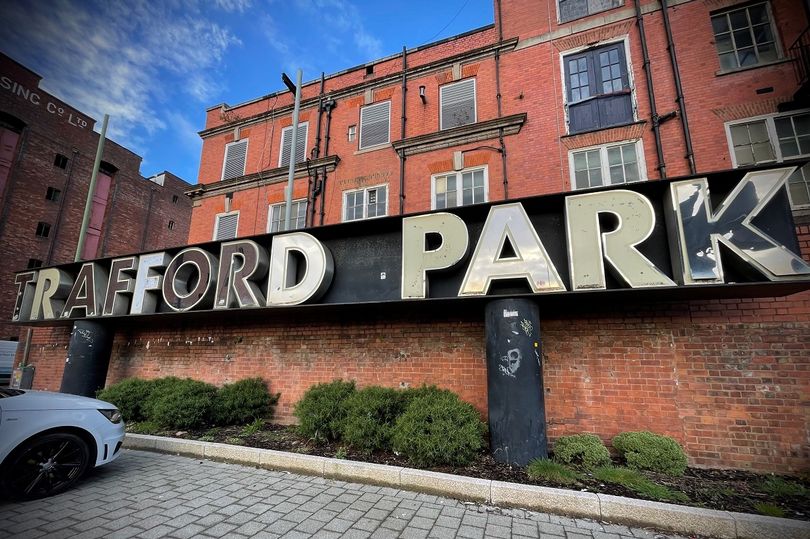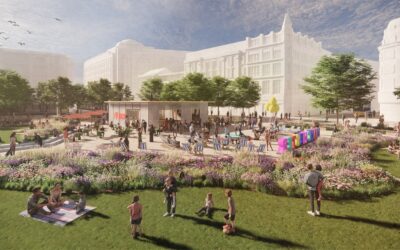
Siemens has set a target to decarbonise Trafford Park, one of Europe’s largest industrial estates, by 2038. The work will to support Trafford Council’s aims and Greater Manchester’s overarching goal to achieve net zero by 2038, twelve years ahead of the government target.
The Low Carbon Trafford Park 2038 study, proposed by Siemens, aims to identify, cost and measure the impacts of low carbon technologies at the industrial estate. It covers a broad range of solutions, from waste to energy and heat recovery from energy intensive industrial players, to the potential for solar photovoltaics across the park to generate 147 GWh of clean energy.
The study acts as a blueprint for Trafford council to consider as it works to eliminate the 714,000 tonnes of carbon emitted from Trafford Park each year. The estate is home to 1,330 businesses employing more than 35,000 people, with a dense population of industrial and commercial occupiers over an area of 4.6 sq miles.
Trafford Council aims to use the roadmap to facilitate stakeholder engagement and collaboration across the industrial park, aligning business and environmental goals to different commercial segments across recommended technological and behavioural measures. It will then consider its broader recommendations as part of a long-term plan in partnership with occupiers.
Siemens expects the decarbonisation of Trafford Park to attract new businesses and maintain and enhance its standing as a commercial and industrial hub in the region. The measures recommended would require £1.2 billion of private and public investment to achieve a 94% reduction in emissions. The study provided Trafford Council with modelling of an extensive range of measures for conserving gas and electricity and for generating clean energy on-site.
Carl Ennis, CEO of Siemens in the UK and Ireland, said: “Projects like this are a vital step for the UK’s net zero ambitions. Decarbonisation can’t just be about creating brand new net-zero buildings and infrastructure. Put simply, we need to be able to measure, assess and act to change what we already have.
“As one of Europe’s leading industrial hubs, Trafford Park now has an opportunity to lead the way and be an example of what the public and private sector can achieve together in reaching net zero.”
The plan includes modelling of 48 energy conservation measures to reduce total on-site electric and gas consumption at the industrial park, from energy efficient lighting technology to building automation controls.
This was accompanied by sequenced implementation of electricity and heat generation measures. The study recommended the rollout of solar photovoltaics, with Siemens identifying the park’s potential to generate 147 GWh of energy per year through rooftop and carport mounted panels. The installation of wind turbines could also generate up to 21 GWh per year, according to the study. Heat decarbonisation measures including waste to energy and waste heat recovery, combined heat and power and regional hydrogen solutions were recommended in conjunction with a district heat network to capture and transport 1 TWh of heat per year.
A spokesperson for Trafford Council, said: “In the current global economy and climate emergency, Trafford Council’s aim is to ensure Trafford Park businesses can lead the way on sustainability and climate change reflecting the rich industrial history and spirit for entrepreneurship that has enabled Trafford Park to develop into one of Europe’s largest and most successful business districts.
“The findings from the studies have provided a blueprint for how the Council can work with consultants such as Siemens, Arup, and Groundwork Greater Manchester to ensure that Trafford Park remains a vibrant, economic powerhouse whilst addressing climate change within the borough. We are hopeful that it will provide a national if not global example of how a significant industrial park can play a vital role in looking after our environment.”
The Siemens study was commissioned alongside other reports from Arup and Groundwork Greater Manchester on Trafford Park’s decarbonisation.
For more information, visit: https://new.siemens.com/global/en/company/topic-areas/smart-infrastructure.html



